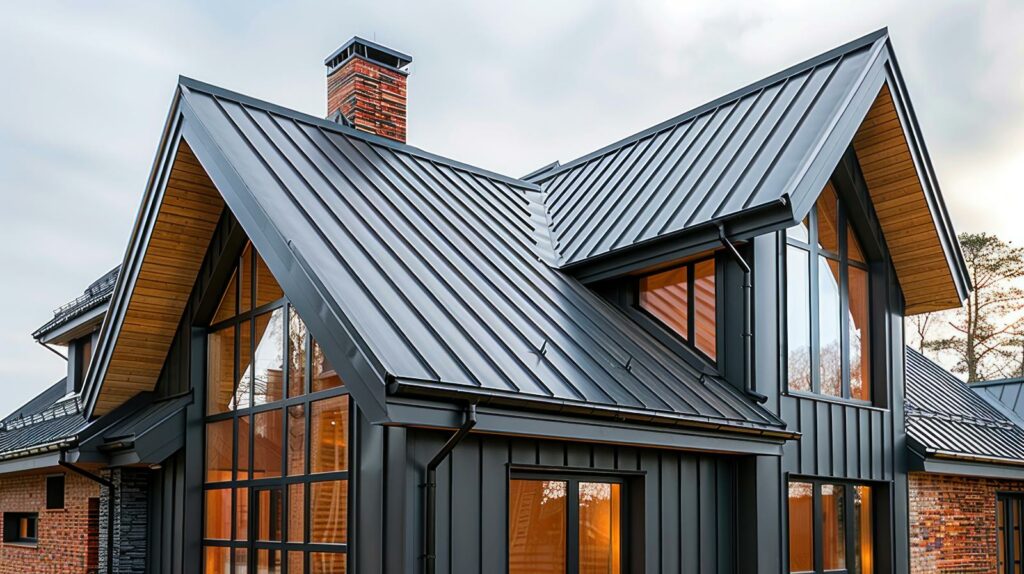
Contents
You’re looking to maximize the lifespan of your metal building, and that requires a strategic approach. By incorporating these seven best practices, you can guarantee that your structure remains sturdy and resilient for years to come. From selecting the right materials to embracing proactive maintenance strategies, each tip contributes to the overall durability of your metal building. So, are you ready to take the necessary steps to safeguard your investment and protect your building against the test of time?
Key Takeaways
- Prioritize high-quality materials like galvanized steel for longevity.
- Implement effective rust prevention techniques with regular coatings.
- Ensure proper drainage systems to prevent water damage.
- Conduct routine maintenance and inspections to address issues promptly.
- Invest in professional maintenance services for expert care and upgrades.
Choose Quality Materials
When selecting materials for your metal building, prioritize durability and strength over cost to ensure longevity and structural integrity. Material selection is an important aspect of ensuring the longevity of your metal building. Opt for high-quality materials, such as galvanized steel or aluminum, which offer superior resistance to corrosion and weathering. These materials are renowned for their durability and ability to withstand harsh environmental conditions, ensuring the longevity of your structure.
In addition to material selection, the construction techniques used in assembling your metal building also play a significant role in its long-term durability. Make sure that proper construction techniques are employed during the building process to maximize the structural integrity of your metal building. This includes following manufacturer guidelines for assembly, using appropriate fasteners, and ensuring that all components are securely connected.
Regular Inspections and Maintenance
To ensure the longevity of your metal building, it’s vital to conduct regular inspections and maintenance.
By adhering to a set inspection frequency and following a thorough maintenance checklist, you can identify issues early on.
Promptly addressing any necessary repairs will prevent minor problems from escalating into costly issues down the line.
Inspection Frequency
Regular inspections and maintenance are vital for ensuring the longevity and structural integrity of metal buildings. To prevent rust and metal degradation, it is important to establish a routine inspection schedule. Conducting thorough checks on a regular basis can help identify issues early, preventing them from escalating and causing significant damage. Here is a table highlighting the recommended inspection frequency based on different components of the metal building:
| Component | Daily Check | Weekly Check | Monthly Check | Yearly Check | Bi-Yearly Check |
|---|---|---|---|---|---|
| Roof | X | X | X | ||
| Walls | X | X | |||
| Foundation | X | X |
Maintenance Checklist
Maintain the structural integrity and longevity of your metal building by following a thorough maintenance checklist. Regular inspections are important for detecting issues early. Start with surface protection by ensuring the paint or protective coatings are intact. Look for any signs of corrosion and address them promptly to prevent further damage.
Inspect the roof for any leaks or damage that could lead to water infiltration. Check the gutters and downspouts for blockages to avoid water accumulation. Keep an eye on the foundation for any shifting or cracks.
Lubricate moving parts like hinges and locks to prevent wear. By focusing on surface protection and corrosion prevention, you can extend the life of your metal building significantly.
Repair Promptly
Inspect your metal building regularly to identify and address any maintenance issues promptly. Essential fixes and preventive care are vital for the longevity of your structure. By catching problems early, you can prevent them from escalating and causing more extensive damage. Conduct thorough inspections of the roof, walls, joints, and foundation to make sure everything is in top condition. Look for signs of rust, corrosion, leaks, or any structural weaknesses. When you notice any issues, take immediate action to repair them. Regular maintenance not only extends the lifespan of your metal building but also saves you time and money in the long run.
| Maintenance Area | Action Needed |
|---|---|
| Roof | Check for leaks |
| Walls | Inspect for rust |
| Joints | Guarantee tight seals |
Proper Drainage System Installation
To safeguard effective water management and prevent structural damage, proper installation of a robust drainage system is essential for long-lasting metal buildings. The drainage system plays a pivotal role in maintaining the integrity of the structure by efficiently directing water away from the building and its foundation. By ensuring peak drainage efficiency, you can avert water buildup, which is necessary for avoiding corrosion and potential damage to the metal components.
When installing a drainage system for a metal building, it’s imperative to take into account factors such as the slope of the land, the volume of water expected, and the materials used. The system should be designed to handle heavy rainfall and effectively channel water towards designated outlets. Proper planning and installation will help in preventing corrosion of the metal components caused by standing water or excessive moisture exposure.
Additionally, incorporating features like gutters, downspouts, and adequate grading around the building can further enhance the effectiveness of the drainage system. Regular maintenance and inspection of the system are also crucial to ensure its continued functionality. By prioritizing the installation of a reliable drainage system, you can safeguard your metal building against water-related issues and contribute to its long-term durability and structural integrity.
Implement Rust Prevention Techniques
Implementing effective rust prevention techniques is essential for ensuring the longevity and durability of metal buildings. To combat corrosion and maintain the structural integrity of your metal building, you must prioritize surface coatings and rust inhibitors. Surface coatings act as a barrier between the metal and external elements, preventing moisture and oxygen from reaching the metal surface and initiating the corrosion process.
Rust inhibitors are chemical compounds that can be applied to the metal surface to delay or prevent rust formation. These inhibitors work by either forming a protective layer on the metal surface or altering the chemical environment to make it less conducive to corrosion. By incorporating rust inhibitors into your maintenance routine, you can notably extend the lifespan of your metal building.
Corrosion prevention is a proactive approach that involves the regular application of protective coatings. These coatings are specifically designed to withstand harsh environmental conditions and provide long-lasting protection against rust and corrosion. Investing in high-quality protective coatings can save you time and money in the long run by reducing the need for extensive repairs or replacements.
Control Moisture and Humidity Levels
Managing moisture and humidity levels is essential for the maintenance of metal buildings to prevent corrosion and ensure long-term structural integrity. To control moisture effectively, consider installing a dehumidifier in your metal building. Dehumidifiers help reduce the humidity levels indoors, minimizing the risk of condensation forming on metal surfaces. This is important as condensation can accelerate corrosion processes, leading to structural damage over time.
In addition to dehumidifier installation, implementing moisture control techniques is crucial. Seal any gaps or leaks in the building envelope to prevent water infiltration. Regularly inspect the building for any signs of water leaks and address them promptly. Proper insulation can also help regulate indoor humidity levels by reducing the temperature differential between the interior and exterior of the building.
Furthermore, maintaining proper ventilation is key to controlling moisture and humidity levels. Adequate airflow helps prevent stagnant, humid conditions that promote corrosion. By combining dehumidifier installation, moisture control techniques, and good ventilation practices, you can effectively manage moisture and humidity levels in your metal building, ensuring its longevity and structural durability. Remember, a proactive approach to moisture control is essential in preserving the integrity of your metal building for years to come.
Ensure Adequate Ventilation
Controlling moisture and humidity levels is essential for maintaining your metal building; hence, ensuring adequate ventilation is important for preventing corrosion and promoting structural longevity. Ventilation control plays a pivotal role in regulating the airflow within your metal building, helping to minimize the buildup of condensation and reducing the risk of rust or decay on metal surfaces.
To effectively manage ventilation, consider installing vents strategically throughout the building to encourage proper airflow. By allowing fresh air to enter and stale air to exit, you create a more balanced environment that discourages excessive moisture accumulation. Additionally, utilizing exhaust fans can help enhance airflow management, especially in areas prone to high humidity levels.
Proper insulation is also crucial to ventilation control. Insulating your building not only helps maintain a comfortable indoor temperature but also aids in regulating moisture levels by preventing condensation from forming on the interior surfaces. This insulation barrier acts as a protective shield against temperature differentials that can lead to moisture-related issues.
Regularly inspecting and maintaining your ventilation system is imperative for long-lasting metal buildings. Clearing any obstructions that may impede airflow and ensuring that vents are functioning correctly will help uphold ideal ventilation levels. By prioritizing ventilation control and airflow management, you can significantly extend the lifespan of your metal building while maintaining its structural integrity.
Professional Repairs and Upgrades
When it comes to ensuring the longevity of your metal building, expert maintenance services and quality material replacements are essential.
Professional repairs and upgrades can help address any structural issues promptly and effectively.
Expert Maintenance Services
For professional repairs and upgrades to metal buildings, expert maintenance services are crucial to guaranteeing longevity and structural integrity.
Rust prevention is a key aspect of maintenance services for metal buildings. Regular inspections can help identify early signs of rust, allowing for prompt treatment to prevent further corrosion. Professional maintenance services also involve cleaning and coating metal surfaces to protect against rust formation.
Additionally, expert maintenance services can include upgrades to enhance the building’s durability, such as reinforcing weak areas or improving insulation.
Quality Material Replacements
To ensure the continued structural integrity and longevity of your metal building, professional repairs and upgrades through quality material replacements are essential.
When it comes to high-quality material replacements, ensuring excellent material quality is essential. Opt for high-grade steel or other corrosion-resistant materials to prevent rust, a common issue that can compromise the durability of metal buildings.
Regularly inspecting for signs of rust and promptly replacing any affected materials will help maintain the building’s strength and appearance. Additionally, investing in rust-prevention coatings and treatments can further enhance the longevity of your metal structure.
Review
By investing in quality materials, regular maintenance, and proper techniques for rust prevention and moisture control, you can guarantee the longevity and durability of your metal building.
Implementing these tips won’t only extend the lifespan of your structure but also save you time and money in the long run. Prioritize structural integrity and maintenance to keep your metal building standing strong for years to come.
Recent Posts
Explore Benefits of Residential Metal Structures
It’s funny how you might stumble upon the idea of residential metal structures just when
5 Best Durable Metal Garages for Longevity
Imagine your garage as the backbone of your property, supporting everything from tools to vehicles,
3 Tips for Durable Metal Garages
Is it true that the longevity of your metal garages hinges on just a few




